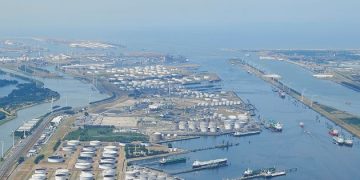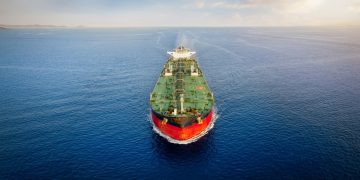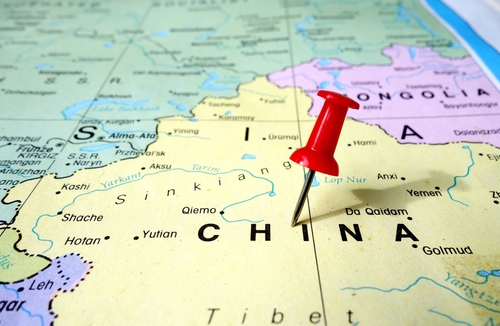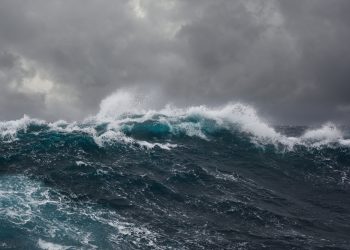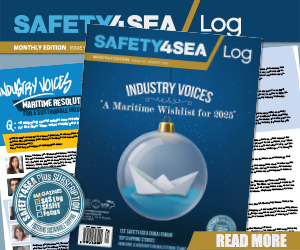MPA Singapore offers recommendations to optimize navigation techniques, regulate action to avoid collision, and address emergency rescue measures for merchant vessels navigating in the coastal waters of China.
1. Navigation Techniques
Prior to voyages bound for Chinese ports or transiting through coastal waters of China, special attention should be paid to the spatial distribution of fishing grounds in these areas before departure. It is essential to conduct a thorough collision risk assessment and carefully make voyage plans. Beware of the clusters of fishing vessels and prioritize safety above all, opting to avoid such clusters rather than taking unnecessary risks.
In situations where entry into waters with high concentrations of fishing vessels is unavoidable, proper identification of fishing vessels, their lights, shapes, and nets, as well as their ongoing fishing operations, is highly recommended. Developing a collision avoidance plan in advance to safely pass clear of all fishing vessels and their nets is strongly advised.
A navigation safety meeting should be organized to ensure that all bridge watch-keeping personnel are well-informed about the characteristics of fishing operations, safety precautions for navigating in areas with high concentrations of fishing vessels, comprehensive collision risk assessment, optimization of collision avoidance plans, information reporting and sharing, as well as emphasizing the importance of crew members adhering to these guidelines.
Thoroughly inspect and test navigational aids and communication equipment, including radar, ECDIS/ECS, AIS, VDR, VHF, navigation lights, Aldis light, and other sound-signalling appliances, to ensure that they are all in good working condition.
Conduct a thorough examination of the main engine, auxiliary engine, steering gear, windlass, and boilers to ensure that they are all in optimal working condition. Ensure that the main engine is prepared for immediate manoeuvring. Test the manual (Follow-up, Non-Follow up), auto, and emergency steering to verify that the steering system is in good working order, ready to facilitate emergency collision avoidance actions if required.
Ensure appropriate bridge watchkeeping level, with a minimum of two watchstanders consistently on the bridge to fulfil their duties and responsibilities. 1.2 Navigating in or close to areas with high concentrations of fishing vessels.
Bridge watchstanders should at all times maintain a proper look-out by sight and hearing as well as by all available means appropriate in the prevailing circumstances and conditions, comprehensively collect the navigation situation of other vessels in the vicinity, so as to make a full appraisal of the situation and of the risk of collision.
The auto steering should be changed to manual when entering areas with high concentrations of fishing vessels. Clearing distance of at least 1 nm should be maintained if the circumstances of the case admit.
Maintain a high level of vigilance and strive to avoid close-quarters situations arising from sudden speed changes, stops and course alterations by fishing vessels to protect their nets.
Officer of the watch should adapt the level of watch-keeping based on the density of fishing vessels and workload, and if necessary, promptly call master to the bridge.
Matters requiring special attention:
- Most collisions between merchant vessels and fishing vessels occur between 2300 and 0400.
- Some fishing vessels anchoring at night may not arrange proper watch- keeping or display proper lights or have turned on the AIS device as required.
- AIS transmitters on fishing nets or fishing marks may interfere with AIS, radar, ECDIS on merchant ships.
- The radar echoes of some wooden fishing vessels are relatively weak and could be difficult to be detected by Radar in bad weather.
- When handing over the watch, the traffic conditions of nearby merchant and fishing vessels and other navigation safety risks should be covered. Handover can only proceed after the on-going avoiding action is completed.
2. Action to Avoid Collision
Actions to avoid collision shall be taken in ample time, be substantial, at safe distance, and be finally past and clear. When there is a risk of collision with fishing vessels, the latter should be called via VHF CH 16 as early as possible. If there is no response after several attempts, avoiding actions should be taken proactively, and use other sound and light signals to warn the fishing vessels.
While emergency action is needed to avoid a fishing vessel, at least 5 short and rapid flashes by Aldis light and / or at least 5 short and rapid blasts on the whistle can be used to attract the attention of the fishing vessel. In an emergency collision avoidance situation, in addition to a course alteration, reducing speed or stopping engine should be considered.
Special attention should also be paid to the movements of other merchant vessels when taking action to avoid fishing vessels, so as not to develop risk of collision with other merchant vessels, especially when they are navigating amidst a large number of fishing vessels.
In or near an area of restricted visibility, sound signals should be used as required, and lookout(s) should be posted at bow if necessary.
In adverse weather, speed should be adjusted and lookout be enhanced, as fishing vessels located in the visual and radar blind sectors can be difficult to be identified.
Matters requiring special attention:
- While engaging in verbal communication, it is important to consider potential communication barriers such as accents and language expressions. This consideration ensures that both parties involved have a clear understanding of each other’s intentions.
- If it is observed that the speed of fishing vessels is at around 3 knots, they are often engaged in fishing operation with restricted manoeuvrability. Proactive avoiding action should be taken accordingly.
- Even a slight collision or contact between a merchant vessel and a fishing vessel may cause damage or even capsizing of the fishing vessel. But it is not always easy for watchstanders on merchant vessels to notice the incident. Close attention should be paid to ensure that no collision, wave damage or vessel suction occurs when passing a fishing vessel at close range.
- When fishing vessels come into close proximity with merchant vessels, they may exhibit unusual behaviours such as abrupt speed changes, course alterations, or attempting to cross ahead of merchant vessels. These actions are often driven by fighting vessels’ desire to protect their nets or adhere to traditional customs. It is important for merchant vessels to be aware of these potential manoeuvres and take appropriate measures to ensure the safety of both vessels involved.
- In areas where fishing vessels are densely concentrated, officers of merchant vessels may experience challenges in detecting other merchant vessels. This difficulty arises from the interference caused by the lights present on fishing vessels and AIS transmitters attached to their nets.
3. Emergency Rescue
In situations where a collision becomes unavoidable, it is crucial to reduce ship’s speed as much as possible. Additionally, efforts should be made to avoid a collision between the bow of merchant vessel and the side of the fishing vessel.
Following a collision, the vessel should be brought to an immediate stop. The primary focus should be on prioritizing life-saving measures and making every possible effort to rescue those in distress. It is imperative not to cease search and rescue operations or leave the scene without permission until all at risk have been safely removed from danger. This should be adhered to unless the safety of own vessel is severely compromised.
Following a collision, it is essential to promptly report the incident to the nearest competent maritime authority using all available means of communication. The report should include vital information such as the accident’s location, the name of the distressed vessel, details about casualties and damages, prevailing weather and sea conditions, and any specific rescue requirements.
Additionally, nearby vessels should be immediately notified to aid in the rescue efforts. All crew members responsible for navigation watch-keeping should possess a thorough understanding of the above guidance.

















